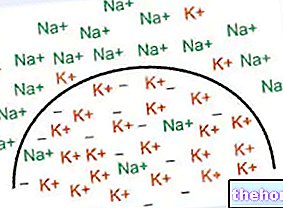Introduction
The test strips are used in monitoring blood glucose, proving particularly useful for home self-control and the possible adjustment of drug therapy under the guidance of the attending physician. In the course of this article we will analyze the advantages, the correct methods of use and the reliability of the test strips and the values provided by the glucometer.
Usefulness of test strips
By using the test strips in association with the special meter, called a glucometer, the self-sufficient patient is able to check their glycemic values in complete autonomy and in real time, adjusting the drug therapy as required according to what is prescribed by the doctor. All this allows to avoid episodes of hypoglycemia or hyperglycemia, frequent in diabetics forced to follow insulin therapy.

Overall, therefore, glycemic self-control in a collaborating patient makes it possible to prevent or in any case significantly reduce the onset of complications typical of diabetes.
Principle of operation and correct way of use
The test strips are typically used in association with a special portable detector, called a glucometer. To measure your blood sugar, you just need:
- wash your hands with soap and water, and dry them thoroughly
- take a test strip from the container and close it immediately
- insert the test strip into the meter and wait for the confirmation of the instrument
- gently place a drop of capillary blood on the reactive part (free end) of the strip; the drop of blood is taken through special lancing devices by making a puncture on a fingertip (before making the puncture always remember to wash and dry your hands, disinfecting the fingertip). To promote vascularization and blood flow, it is advisable to gently massage the fingertip before sampling
- Wait for the confirmation of the adequacy of the sample (which could be insufficient or excessive) by the glucometer and read the measured blood glucose value on the display
- Write down the blood glucose value in your diary and possibly adjust the therapy as prescribed by your doctor. Many glucometers allow you to store the values of several dozen glycemic measurements in the internal memory of the device, and to transfer them to your computer via USB cable; again, some models translate these values into graphs showing for example the average daily glucose and the amplitude of daily glycemic excursions.
- PLEASE NOTE: Always use a new sterile lancet and a new test strip for each glucose test (the lancets and strips for the glucose meter are for single use only)
Since this is a general description, and as there are various automated devices on the market, it is recommended to respect the procedural rules suggested by the manufacturer with extreme care. The pharmacist or doctor who is treating the patient should also instruct him on the correct methods of use , dispelling any doubts that arise.
Typically, self-monitoring with test strips is recommended three to four times a day according to the schedule prescribed by the physician.
In addition to the aforementioned models, there are test strips that vary in color in relation to the glucose concentrations present in the urine with which they come into contact; they are useful, in particular, to testify the presence of glucosuria, since under normal conditions in the urine there is no find significant amounts of glucose.
Accuracy of results
If carried out in full compliance with the rules of correct use dictated by the manufacturer, the measurement of blood glucose through test strips and portable glucometer is particularly accurate. The technological advances in recent years have in fact made it possible to significantly increase the reliability of the measurement, even in particular conditions. Among these, the hematocrit value, which when particularly low (60-65%) could - depending on the model - make it inaccurate the estimate of the concentration of glucose in the blood (indicatively over or underestimating it by 10-15%). The same goes for extremely high or extremely low glycemic values.
The operating temperature is also important, an environment that is too cold (40 ° C) could alter the accuracy of the blood glucose values returned by the device; the same goes for the values of altitude and ambient humidity.
Finally, there may be important differences depending on the type of test strips used, even if they are produced by the same company and of the same model (possible variation from lot to lot). For this purpose, some glucometers require you to insert the code or the chip present in the package to self-calibrate based on the characteristics of the test strips used; others are able to independently detect this data. In the case of an automatic procedure (inserting the chip or automatic detection) it is however important to make sure that the glucometer displays the same code shown on the packaging of the strips. All these calibration operations must be repeated when opening and using a new package of test strips.
Apart from the specific accuracy of the test strips and the glucometer used by the patient, it is however recommended that the self-monitoring is periodically integrated with the traditional blood glucose analysis on plasma by hospital sampling; in this way it is possible to compare the data and make sure that the blood glucose meter is working correctly (to do this, take the two measurements at the same time and state of nutrition, or better yet, self-monitor your blood glucose with a glucometer and test strips immediately before or immediately after the hospital sample).
Select Blood Tests Blood Tests Uric acid - uricaemia ACTH: adrenocortitotropic hormone Alanine amino transferase, ALT, SGPT Albumin Alcoholism Alphafetoprotein Alphafetoprotein in pregnancy Aldolase Amylase Ammonemia, ammonia in the blood Androstenedione Anti-endomysium antibodies Antipholipic antibodies Antiphosphates Antiphosphates Nucleus Helicobacter pylori antibodies Embryo carcinoal antigen - CEA Prostate specific antigen PSA Antithrombin III Haptoglobin AST - GOT or aspartate aminotransferase Azotemia Bilirubin (physiology) Direct, indirect and total bilirubin CA 125: tumor antigen 125 CA 15-3: tumor antigen 19-9 as tumor marker Calcemia Ceruloplasmin Cystatin C CK-MB - Creatine kinase MB Cholesterolemia Cholinesterase (pseudocolinesterase) Plasma concentration Creatine kinase Creatinine Creatinine Creatinine clearance Chromogranin A D-dimer Hematocrit Blood culture Hemocrome Hemoglobin Glycated hemoglobin a Blood tests Blood tests, Down syndrome screening Ferritin Rheumatoid factor Fibrin and its degradation products Fibrinogen Leukocyte formula Alkaline phosphatase (ALP) Fructosamine and glycated hemoglobin GGT - Gamma-gt Gastrinemia GCT Glycemia Red blood cells Granulocytes HE4 and Cancer at "Ova" Immunoglobulins INR Insulinemia Lactate dehydrogenase LDH Leukocytes - white blood cells Lymphocytes Lipase Tissue damage markers MCH MCHC MCV Metanephrines MPO - Myeloperoxidase Myoglobin Monocytes MPV - average platelet volume Natremia Neutrophils Homocysteine Thyroid hormones OGTT Osmatidia Osmatidia Plasma Osmatidia | Plasma protein A associated with pregnancy Peptide C Pepsin and pepsinogen PCT - platelet or platelet hematocrit PDW - distribution width of platelet volumes Platelets Plateletpenia PLT - number of platelets in blood Preparation for blood tests Prist Test Total IgEk Protein C (PC) - Protein C Activated (PCA) C Reactive Protein Rast Protein Test Specific IgE Reticulocytes Renin Reuma-Test Oxygen Saturation Sideremia BAC, BAC TBG - Thyroxine Binding Globulin Prothrombin Time Partial Thromblopastin Time (PTT) Activated Partial Thromboplastin Time (aPTT) Testosterone Testosterone: free and bioavailable fraction Thyroglobulin Thyroxine in the blood - Total T4, free T4 Transaminases High transaminases Transglutaminase Transferrin - TIBC - TIBC - UIBC - saturation of transferrin Transtyretin Triglyceridemia Triiodothyronine in the blood - Total T3, free T3 Troponin TRH and Troponins of s thymol to TRH TSH - Thyrotropin Uremia Liver values ESR VDRL and TPHA: serological tests for syphlis Volemia Conversion of bilirubin from mg / dL to µmol / L Conversion of cholesterol and triglyceridemia from mg / dL to mmol / L Conversion of creatinine from mg / dL to µmol / L Conversion of blood glucose from mg / dL to mmol / L Conversion of testosteronemia from ng / dL - nmol / L Conversion of uricemia from mg / dL to mmol / L




























